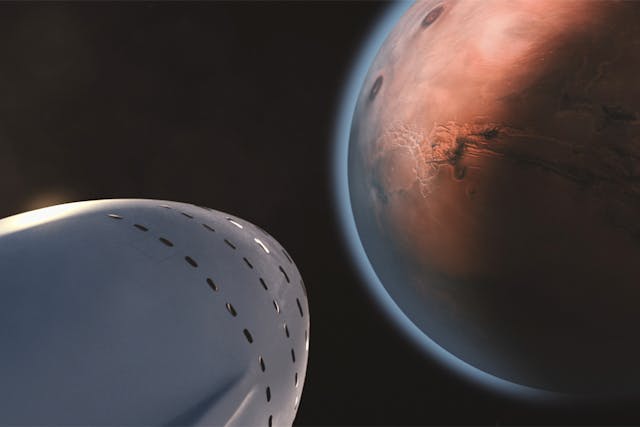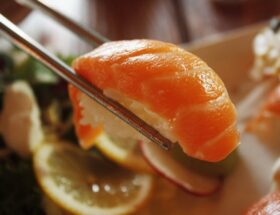As the dream of space colonization inches closer to reality, one question is as important as ever: What will we eat on Mars or the Moon? Life on other planets would mean a radical shift in our approach to food production and consumption, but certain foods are strong contenders for becoming interplanetary staples. Welcome to GertieBlu, where we explore the 10 foods that would likely thrive and become popular on Mars or the Moon—and why!
1. Potatoes
When you think of space food, potatoes might not be the first thing that comes to mind, but they should be! Potatoes are highly adaptable, calorie-dense, and can grow in tough conditions. In fact, NASA scientists have already experimented with growing potatoes in Martian-like soil. Their versatility also makes them ideal—whether you’re baking, frying, or mashing them, potatoes can be a main dish or a sidekick in countless space-friendly meals.
2. Algae
Algae may not sound appetizing, but it’s a space food superstar. Algae, including varieties like spirulina, can be grown in water with minimal resources, making it perfect for off-world colonies. It’s packed with protein, vitamins, and antioxidants, and grows rapidly in compact spaces. On Mars or the Moon, algae could be cultivated as a staple ingredient in protein shakes, energy bars, or even blended into sauces.
3. Quinoa
This ancient grain is already a superfood on Earth, but quinoa is also perfectly suited for space life. It thrives in a variety of climates, and its high protein content and essential amino acids make it a powerhouse for nutrition. As a grain that can be grown hydroponically, quinoa could become the base for salads, porridges, or even baked goods in a Martian or lunar diet.

4. Tomatoes
Fresh produce is a luxury in space, but tomatoes could easily become a staple crop. They’re not only rich in vitamin C but are also adaptable to hydroponic farming methods, which is essential in a low-gravity environment. Tomatoes are also versatile, forming the base for soups, sauces, and even space-approved snacks like sun-dried tomatoes!
5. Soybeans
Soybeans are likely to become a critical crop in any space colony. Soybeans are rich in protein and can be transformed into multiple food products like tofu, soy milk, and tempeh. These versatile legumes are perfect for space because they grow well in controlled environments, and their high nutrient value means they could serve as the foundation for a plant-based diet in a low-resource setting.
6. Kale
Kale is hardy leafy green that could thrive in space greenhouses. Known for its resilience and nutrient density, kale is packed with vitamins A, C, and K. Kale can be harvested multiple times from the same plant, providing a constant supply of fresh greens. It can be eaten raw in salads, cooked into soups, or even turned into crispy kale chips—perfect for a crunchy snack on the Moon!
7. Chickpeas
Chickpeas could very well become the legume of choice on Mars or the Moon. Chickpeas are packed with fiber, protein, and minerals, making them a nutritional cornerstone. They also have a long shelf life, making them perfect for storage and transport. Whether turned into hummus, falafel, or roasted snacks, chickpeas could easily become a staple in a space-based diet.

8. Mushrooms
Mushrooms may seem like an odd choice, but they are perfect for space farming. They require little light, grow in small spaces, and thrive on organic waste, making them an eco-friendly option for a Mars or Moon colony. Mushrooms are also rich in protein and vitamins, and they add an earthy, umami flavor that could elevate any space meal. Plus, mushrooms could be key players in bio recycling systems, helping to break down waste and convert it into compost
9. Rice
Rice is a fundamental food for billions of people on Earth, and it could play a similar role in space. Rice is highly adaptable and can be grown in water, making it a candidate for space farming. It also provides a high energy yield and can be paired with a wide variety of other foods. From stir-fries to sushi, rice offers versatility that would be much-needed for long-term habitation on Mars or the Moon.
10. Insect Protein
It may not be the most traditional choice, but insect protein is likely to become a major player in space food systems. Insects like crickets and mealworms are rich in protein and healthy fats, and they require far fewer resources to cultivate than livestock. In a space colony where every inch of space matters, insects could be farmed in compact habitats and turned into protein-rich flours or energy bars. As global acceptance of insect protein grows, it could become a normalized, sustainable food source for future space travelers.
Why These Foods?
Living on Mars or the Moon would mean relying on sustainable, resource-efficient foods that provide maximum nutrition with minimal effort. The harsh environments would require crops that can grow in controlled, low-resource environments, and many of the foods listed above—like algae, mushrooms, and quinoa—are already suited for these conditions.
In a space colony, versatility and nutrition are key. Many of these foods, like soybeans, chickpeas, and potatoes, can be used in a wide variety of dishes, ensuring astronauts don’t get tired of eating the same meals over and over. Others, like kale and tomatoes, provide essential vitamins and freshness that would be highly valued in an environment where fresh food is rare.

Wrapping Up
As we look toward the stars, it’s fascinating to consider how our diets might evolve. These 10 foods would not only meet the nutritional needs of space colonists but also help maintain a sense of connection to Earth through flavors and textures we know and love. Whether on Mars, the Moon, or even future space stations, our future meals will be a blend of innovation, sustainability, and comfort.
Stay tuned for more fascinating discussions about food, space, and what the future holds for us beyond Earth!
Until next time, spacefarers!
GertieBlu









